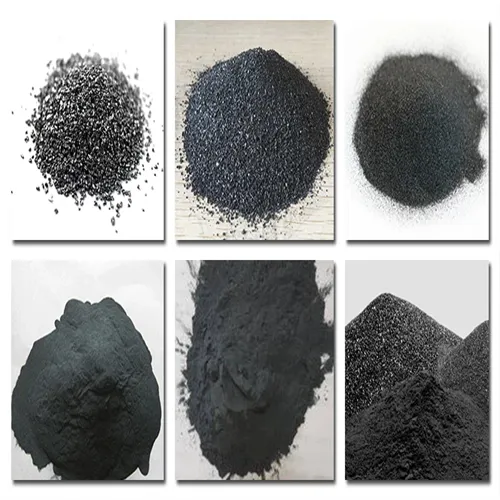Warning: Undefined array key "file" in /home/www/wwwroot/HTML/www.exportstart.com/wp-content/themes/1198/header.php on line 7
Warning: Undefined array key "title" in /home/www/wwwroot/HTML/www.exportstart.com/wp-content/themes/1198/header.php on line 7
Warning: Undefined array key "title" in /home/www/wwwroot/HTML/www.exportstart.com/wp-content/themes/1198/header.php on line 7
- Afirka
- Albaniya
- Amharic
- Larabci
- Armenian
- Azerbaijan
- Basque
- Belarushiyanci
- Bengali
- Bosniya
- Bulgarian
- Catalan
- Cebuano
- China
- China (Taiwan)
- Corsican
- Croatian
- Czech
- Danish
- Yaren mutanen Holland
- Turanci
- Esperanto
- Estoniya
- Finnish
- Faransanci
- Farisa
- Galiciyan
- Jojin
- Jamusanci
- Girkanci
- Gujarati
- Haitian Creole
- hausa
- hawayi
- Ibrananci
- A'a
- Miya
- Harshen Hungary
- Icelandic
- igbo
- Indonesiya
- Irish
- Italiyanci
- Jafananci
- Yawanci
- Kannada
- kazakh
- Khmer
- Ruwanda
- Yaren Koriya
- Kurdish
- Kyrgyzstan
- TB
- Latin
- Latvia
- Lithuaniyanci
- Luxembourgish
- Makidoniya
- Malgashi
- Malay
- Malayalam
- Maltase
- Maori
- Marathi
- Mongolian
- Myanmar
- Nepali
- Yaren mutanen Norway
- Yaren mutanen Norway
- Occitan
- Pashto
- Farisa
- Yaren mutanen Poland
- Fotigal
- Punjabi
- Romanian
- Rashanci
- Samoan
- Scottish Gaelic
- Serbian
- Turanci
- Shona
- Sindhi
- Sinhala
- Slovak
- Sloveniya
- Somaliya
- Mutanen Espanya
- Sundanci
- Harshen Swahili
- Yaren mutanen Sweden
- Tagalog
- Tajik
- Tamil
- Tatar
- Telugu
- Thai
- Baturke
- Turkmen
- Ukrainian
- Urdu
- Uighur
- Uzbek
- Vietnamese
- Welsh
- Taimako
- Yadish
- Yarbawa
- Zulu
Silicon Carbide
Silicon carbide, an inorganic compound with the chemical formula SiC, is produced by high-temperature smelting of quartz sand, petroleum coke (or coal coke), and wood chips (salt is added when producing green silicon carbide) in a resistance furnace. Silicon carbide is a semiconductor and exists in the form of the extremely rare mineral moissanite in nature. It has been mass-produced as powder and crystals since 1893 and is used as an abrasive, among other things. Of the non-oxide high-tech refractory raw materials such as C, N, and B, silicon carbide is the most widely used and economical, and can be called garnet sand or refractory sand. In China, industrial-produced silicon carbide is divided into black silicon carbide and green silicon carbide, both of which are hexagonal crystals.
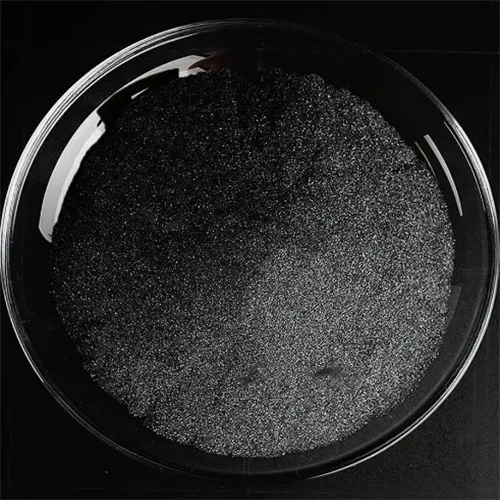
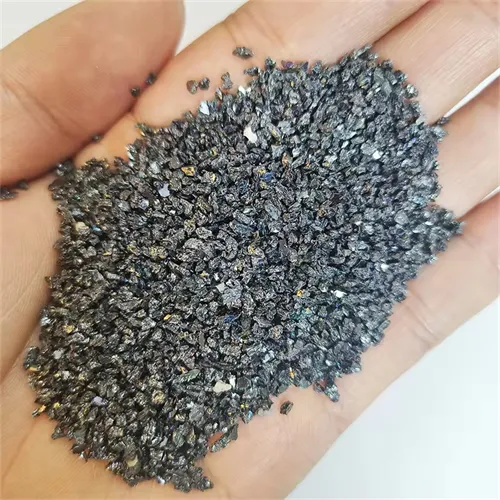


Silicon carbide has two commonly used varieties of black silicon carbide and green silicon carbide, both of which belong to alpha-SiC.
① Black silicon carbide contains about 95% SiC, which has higher toughness than green silicon carbide, and is mostly used to process materials with low tensile strength, such as glass, ceramics, stone materials, refractory materials, cast iron, and non-ferrous metals.
② Green silicon carbide contains more than 97% SiC, has good self-sharpening properties, and is mostly used to process cemented carbide, titanium alloys, and optical glass. It is also used for honing cylinder liners and fine grinding high-speed steel tools. In addition, there is also cubic silicon carbide, which is a yellow-green crystal obtained by special process, and the grinding tools made of it are suitable for ultra-precision processing of bearings, which can process the surface roughness from Ra32 to 0.16 microns to Ra0.04 to 0.02 microns in one process.
Due to its high thermal stability, high strength, high thermal conductivity, etc., it is widely used in atomic energy materials, chemical devices, high-temperature treatment, electric heating elements, and resistors, etc. It is used in abrasives, wear-resistant agents, abrasives, high-grade refractory materials, and fine ceramics.
It is used in abrasives, wear-resistant agents, abrasives, high-grade refractory materials, and fine ceramics.
It is suitable for manufacturing various types of silicon carbide abrasives and ceramic kiln furniture, as well as refractory materials.
It is used in abrasives, high-grade refractory materials, and fine ceramics, etc.
It is used as a reinforcing fiber for composite materials such as resins and metals, and can also be used as an electromagnetic wave absorbing material and heat-resistant material.
It serves as a unidirectional reinforcing material for composite materials, improving various properties. When combined with plastics, metals, and ceramics, it can improve various properties. It can be combined with thermoplastic and thermosetting resins to significantly improve the strength, flexural modulus, thermal conductivity, and wear resistance of plastics. When 15% silicon carbide whiskers are added to PEEK, the thermal conductivity is increased by about 2 times, and the flexural strength of 20% silicon carbide-reinforced polyimide is increased by about 2 times at room temperature, and is the same as the unreinforced case at 250°C. The wear rate is reduced by 17% when 15% silicon carbide is added to epoxy resin.
Muna da masana'antu masu inganci da yawa tare da haɗin gwiwa mai zurfi, wanda zai iya ba ku samfuran inganci da farashin gasa. Kuma muna iya ba da rangwamen kuɗi don sayayya mai yawa. Kuma muna ba da haɗin kai tare da ƙwararrun kamfanoni masu jigilar kaya, za su iya isar da samfuran cikin aminci da kwanciyar hankali ga hannunku. Lokacin bayarwa shine kimanin kwanaki 3-20 bayan tabbatar da biyan kuɗi.
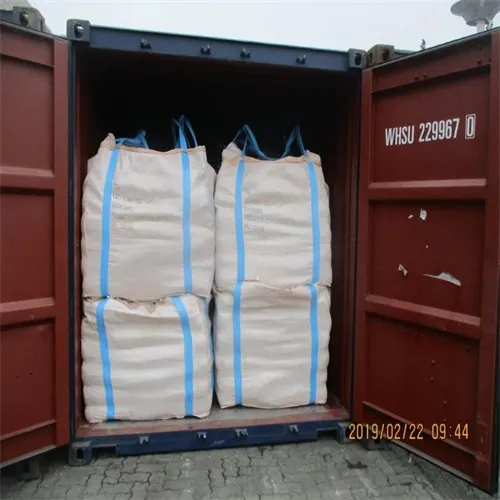



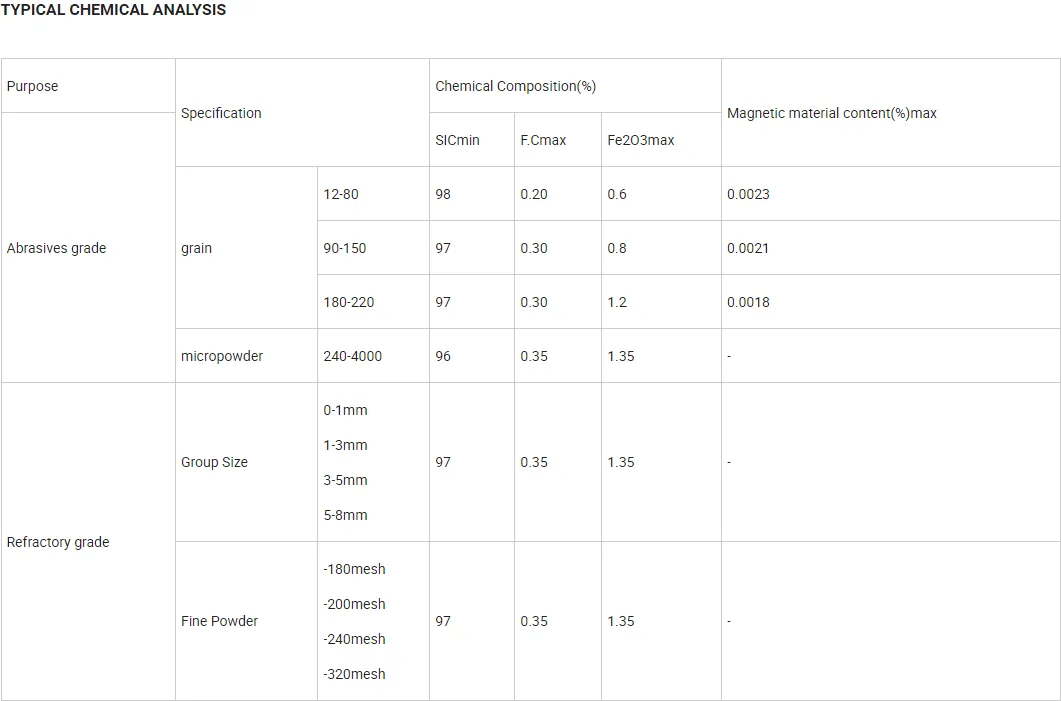
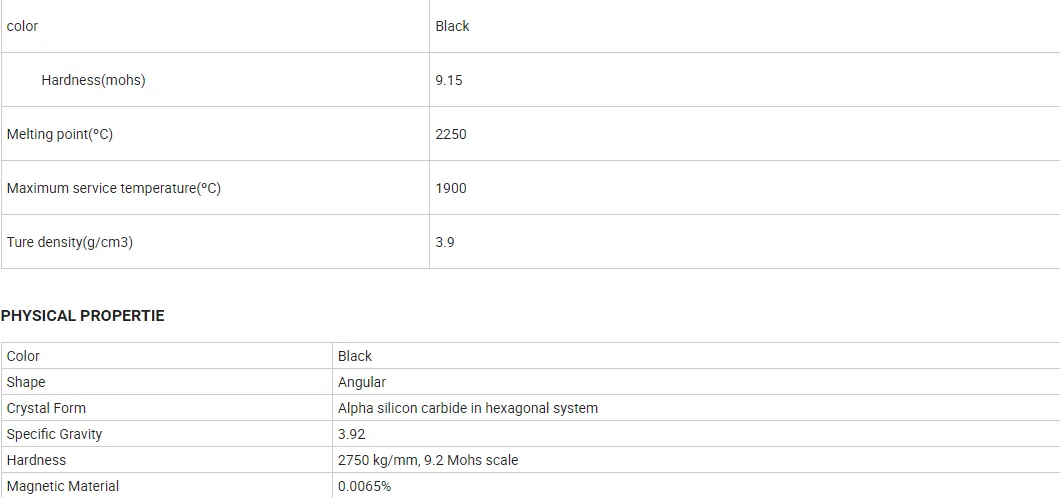

Natural existence
Moissanite in nature exists only in very small amounts in certain types of meteorites, corundum deposits, etc. Most of the silicon carbide currently sold worldwide, including moissanite jewelry, is synthetic.
In 1893, Mosan first discovered the naturally occurring form of silicon carbide in meteorites in Arizona, and in 1905, the material was named Moissanite. [5] But Dr. Mossan's findings were initially questioned because his samples may have been contaminated with the silicon carbide saw blades already on the market at the time. [6]
Silicon carbide is rare on Earth, but common in space. Silicon carbide found in space and meteorites is mostly β-SiC. Analysis of SiC particles found in the Murchison meteorite revealed an unusual isotopic ratio of carbon to silicon, suggesting that the particles originated outside the solar system. [7]
Scale production
Silicon carbide is a kind of carbide accidentally discovered in the laboratory by the American Acheson during the electromelting diamond experiment in 1891. At that time, Acheson was trying to make artificial diamonds, when he heated clay (aluminum silicate) and powdered coke (carbon) in an iron bowl, the formation of blue crystals, which was mistaken for a mixture of diamond, so the name emery. In 1893, Acheson studied the method of industrial smelting silicon carbide, which is often called Acheson furnace, which has been used until now, a resistance furnace with carbon materials as the core body of the furnace, and a mixture of quartz SiO2 and carbon is heated by electricity to generate silicon carbide.

1. Shin ku masana'anta ne ko kamfani na kasuwanci?
Mu kamfani ne mai haɗa masana'antu da kasuwanci, samar da sabis na tsayawa ɗaya. Ana iya karɓar OEM.
2. Kuna samar da samfurori? Yana da kyauta ko kari?
Samfuran kyauta. Ana buƙatar biyan kuɗin jigilar samfurin ta gefen ku.
3. Kuna da wasu takaddun shaida masu alaƙa da kula da inganci?
ISO 9001: 2008 takardar shaida don tabbatar da inganci.
4. Menene zan bayar don samun zance?
Pls sanar da mu nau'in samfurin wanda kuke buƙata, adadin oda, adireshi da takamaiman buƙatu. Za a yi zance don bayanin ku cikin lokaci.
5. Wane irin hanyar biyan kuɗi kuka fi so? Wane irin sharuɗɗan ne ake karɓa?
Sharuɗɗan Isar da Karɓa: FOB, CFR, CIF, EXW;
Kudin Biyan Da Aka Karɓa: USD;
Nau'in Biyan Da Aka Karɓa: T/T, Western Union; Paypal, Tabbacin Kasuwanci.
Harshe Ana Magana: Turanci.
Rukunin samfuran
-
 Apr . 27, 2025Zibo will host the 2025 International Chemical ExpoZibo, a city known for its thriving chemical industry, will host the 2025 Zibo International Chemical Expo from May 16 to May 18, 2025. This highly anticipated event aims to bring together industry leaders, innovators and stakeholders from around the world to explore the latest advancements and trends in the chemical industry.
Apr . 27, 2025Zibo will host the 2025 International Chemical ExpoZibo, a city known for its thriving chemical industry, will host the 2025 Zibo International Chemical Expo from May 16 to May 18, 2025. This highly anticipated event aims to bring together industry leaders, innovators and stakeholders from around the world to explore the latest advancements and trends in the chemical industry. -
 Apr . 22, 20252025 Yokohama Cosmetics Raw Materials and Technology ExhibitionYOKOHAMA, Japan – The City of Yokohama is preparing to host the much-anticipated Cosmetics Ingredients & Technologies 2025 from May 14 to May 16, 2025. The premier event is expected to attract industry professionals, innovators and enthusiasts from around the world to showcase the latest advancements in cosmetic ingredients and technologies.
Apr . 22, 20252025 Yokohama Cosmetics Raw Materials and Technology ExhibitionYOKOHAMA, Japan – The City of Yokohama is preparing to host the much-anticipated Cosmetics Ingredients & Technologies 2025 from May 14 to May 16, 2025. The premier event is expected to attract industry professionals, innovators and enthusiasts from around the world to showcase the latest advancements in cosmetic ingredients and technologies. -
 Apr . 18, 20252025 India Mumbai Fine Chemicals ExhibitionMUMBAI, India – The bustling metropolis of Mumbai is gearing up to host the much-anticipated Fine Chemicals Expo on April 29-30, 2025. The premier event is expected to attract industry leaders, innovators and stakeholders from across the world to showcase the latest advancements in the fine chemicals sector.
Apr . 18, 20252025 India Mumbai Fine Chemicals ExhibitionMUMBAI, India – The bustling metropolis of Mumbai is gearing up to host the much-anticipated Fine Chemicals Expo on April 29-30, 2025. The premier event is expected to attract industry leaders, innovators and stakeholders from across the world to showcase the latest advancements in the fine chemicals sector.



